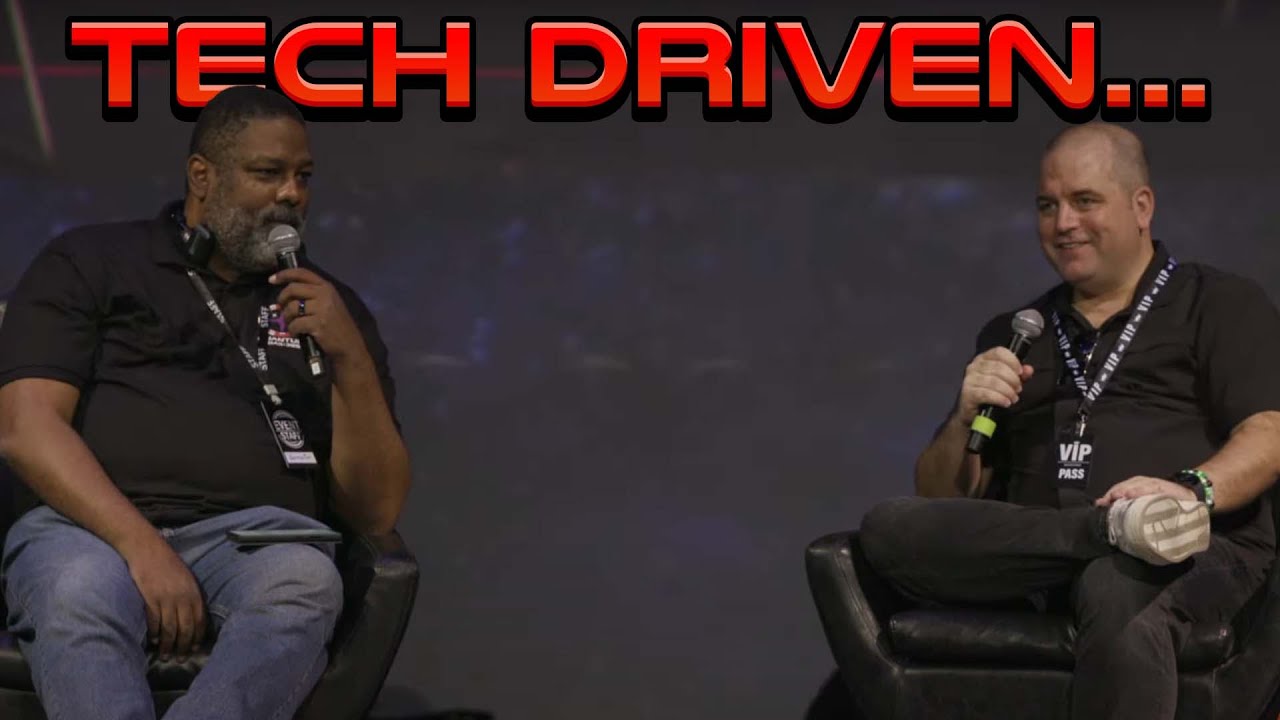In this video, SaltEMike reacts to Sean Tracy’s in-depth discussion on the technical challenges and innovations behind Star Citizen’s development, highlighting the balance between cutting-edge technology and delivering stable gameplay. Sean candidly addresses ongoing tool development, engine advancements, and future AI integration, while acknowledging the complexities and delays inherent in such an ambitious project.
In this video, SaltEMike reacts to a 45-minute session titled “Tech & Tools” featuring Sean Tracy, the Managing Director of Technical Operations at Cloud Imperium Games (CIG), held during the Quantum Vegas 2955 event. Sean shares his journey from military service to game development, highlighting how his injury during deployment led him to start making games, eventually joining Crytek and then CIG. He emphasizes the importance of balancing passion and work to avoid burnout, a challenge often faced in game development, especially in long-term projects like Star Citizen.
The discussion delves into the ongoing challenges and philosophy behind Star Citizen’s development, particularly its focus on cutting-edge technology. Sean acknowledges that while the game aims to stay at the forefront of tech, this often leads to constant reworking of systems, delaying core gameplay features. He points out that the game is technically “out” and playable but still frequently wiped and unstable, contrasting it with fully shipped games. The team strives to keep up with industry advancements, particularly comparing their custom Star Engine with engines like Unreal and Unity, but they tailor technology specifically for Star Citizen’s unique needs rather than copying others outright.
Sean also touches on the internal tools and systems, such as the DNA character customization system, which he considers a significant achievement despite some minor flaws. He discusses the difficulties in balancing technological innovation with delivering a cohesive gameplay experience, noting that the lack of a finalized game design complicates engine and tool development. The conversation includes insights into server meshing, planet tech evolution, and the potential integration of AI technologies to enhance game systems, NPC interactions, and tooling, although these remain in early stages due to technical and resource constraints.
The Q&A segment addresses community questions about licensing the Star Engine, improvements to social tools like Spectrum, paint customization, and the future of gaming technology. Sean is candid about the unlikely prospect of licensing their engine to external parties due to support challenges and legal agreements. He acknowledges ongoing work on social features and paints but admits timelines and specifics are uncertain. Looking forward, he sees a trend towards unified game development tools and middleware, with AI playing a growing role in managing complex data and potentially enhancing player interactions, though real-time AI integration in-game poses significant technical hurdles.
Overall, the session offers a transparent and grounded perspective on the technical side of Star Citizen’s development, balancing enthusiasm for innovation with the frustrations of prolonged development and shifting priorities. SaltEMike appreciates Sean’s honesty and technical insights, while expressing a desire for more content-driven updates and clearer progress towards core gameplay features. The video concludes with a call to share such developer talks widely within the Star Citizen community to maintain engagement and understanding in the absence of frequent official updates.
